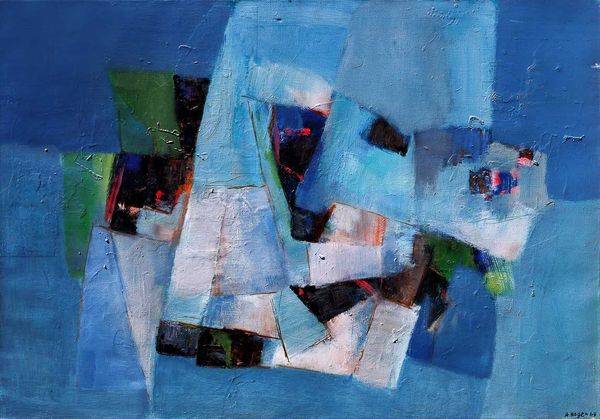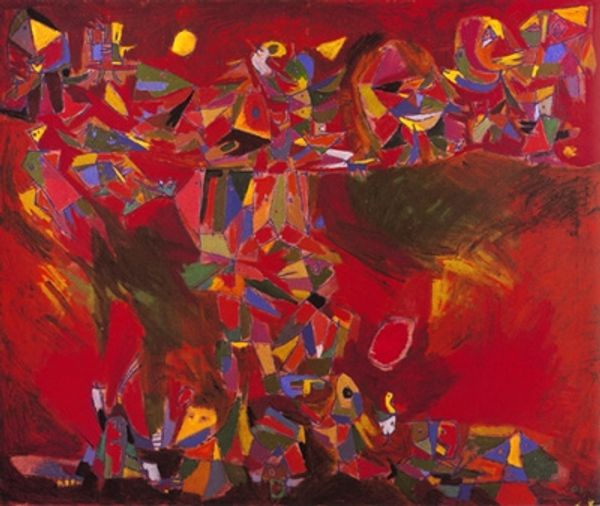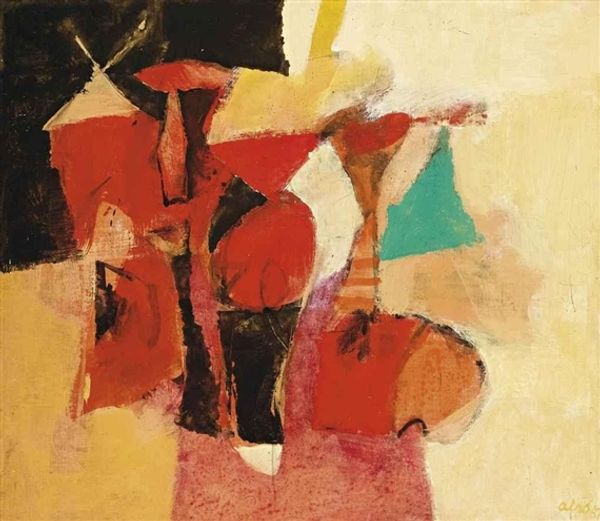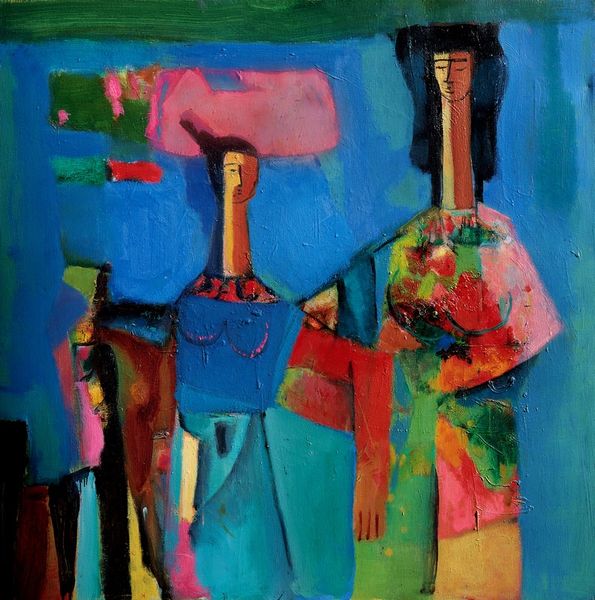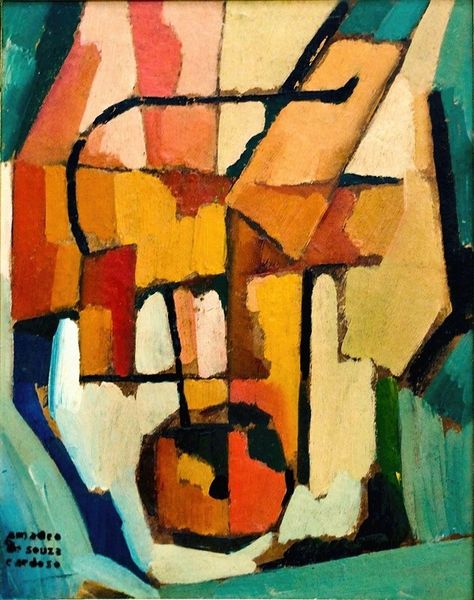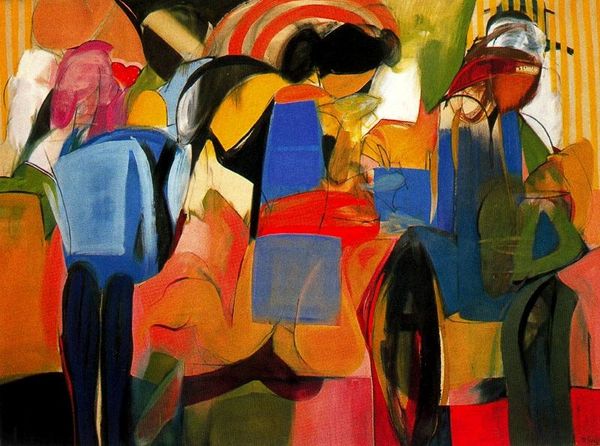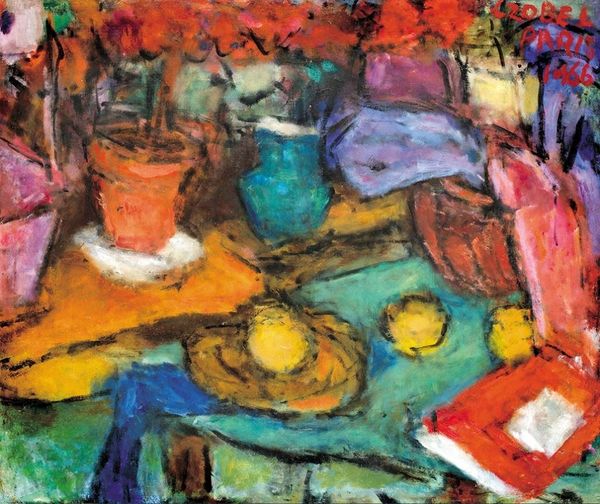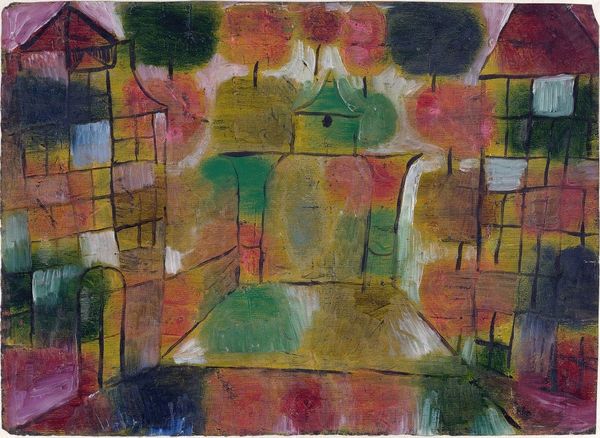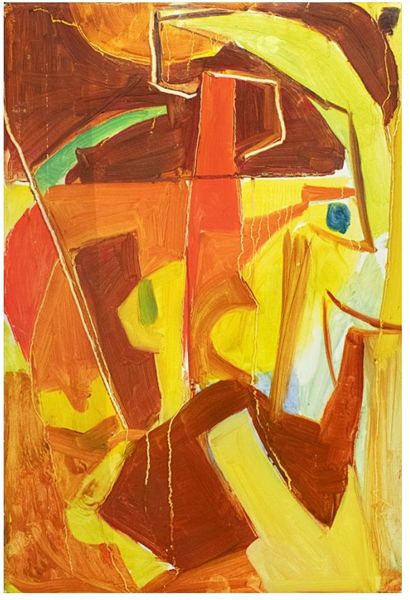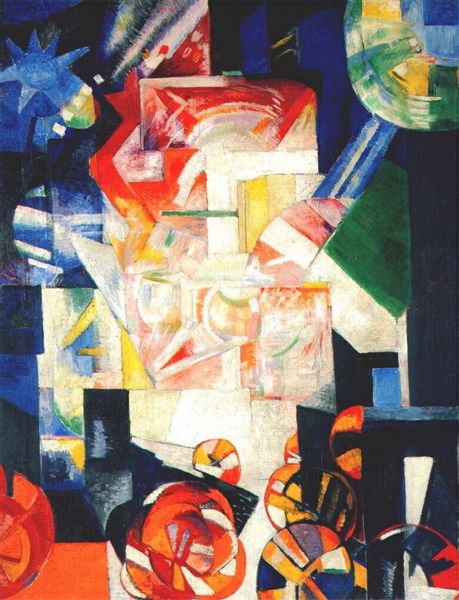
Copyright: Alexander Bogen,Fair Use
Alexander Bogen created this work, titled "Clown," with oil paints, rendering an unsettling figure in an almost violent composition of color and form. The clown, a symbol steeped in ambiguity, appears throughout history from ancient festivals to medieval courts, embodying both humor and melancholy. Here, Bogen channels this duality, presenting a clown that is far from jovial. Note the sharp, angular shapes and the chaotic arrangement of colors. They disrupt any sense of harmony, mirroring the inner turmoil often masked by the clown's painted smile. Think of the Commedia dell'Arte, where the clown, or "zanni," was a figure of both wit and pathos, a mirror reflecting society's follies. This echoes in Picasso's harlequins, figures that straddle the line between performer and sufferer. The clown's mask, a tool for entertainment, becomes a shield against vulnerability. Bogen’s canvas is not merely a portrait but a psychological exploration, tapping into our collective memory of the clown as a symbol of laughter and tears. In this way, the clown resurfaces, evolving from a mere entertainer to a poignant reflection of our own human condition.
Comments
No comments
Be the first to comment and join the conversation on the ultimate creative platform.
